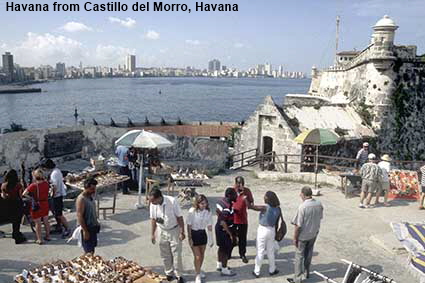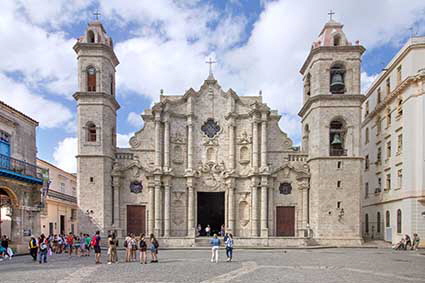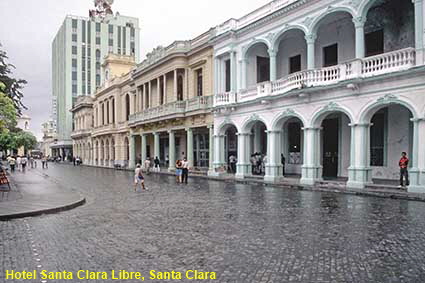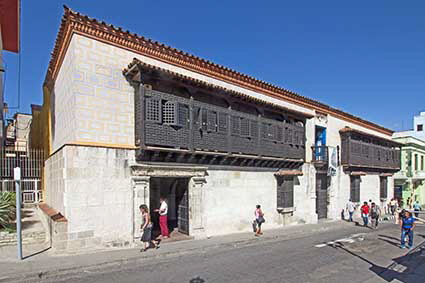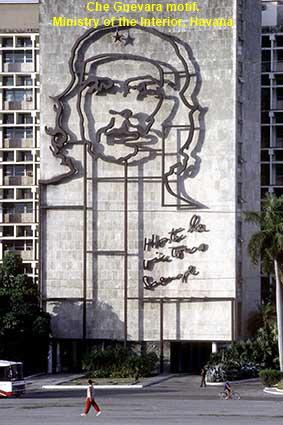Cuba
We try to make this site non political but US/Cuban relations make it impossible to avoid politics on this page. The USA treated Cuba as a virtual colony for many years including supporting corrupt regimes such as that of Fulgencio Batista. In 1959 Fidel Castro seized power, setting up a communist regime and confiscating US assets. The US responded with an embargo and by supporting the unsuccessful Bay of Pigs invasion. Miguel Díaz-Canel became president in April 2018 but Cuba remains a one party state with the Communist Party still led by Fidel’s brother Raul, so only two words can describe the US embargo of Cuba - total failure. Indeed, US policy has probably prolonged communist rule by suppressing the desire for change that triggered liberation in Eastern Europe. We first visited Cuba in 1997 and we returned in February 2016 to see how Cuba had changed before American tourists arrive following the thaw in relations. We found that while the Communist Party remains firmly in control, the Cuban people have some new freedoms, now able to set up their own businesses. The hotels were struggling to cope with the sheer volume of tourists even before the Americans arrive and most were in a poor state of repair. While Fidel Castro got rid of a very corrupt regime and gave Cubans eduction and healthcare, the regime he set up is grossly inefficient, oppressive and murderous, putting many people to death without a proper trial.
Catedral de la Habana, Havana
Cuba may be a one of the last remaining old-style communist countries, but where tourists are found there is plenty of commerce. When we visited Plaza de la Catedral in 1997 we found it full to bursting with stalls ready for the tour parties that arrived throughout the day. The wall to wall stalls made it difficult to appreciate one of the most beautiful squares in Havana. When we returned in 2016 it was very different as the Plaza had been cleared of stalls. On on side of the square stands the Catedral de la Habana. Built in barogue style it was consecrated in 1755 and became a cathedral in 1789. Once home to some of Christopher Columbus’ remains, The guide book told us that the interior was very fine but in 1997 we didn’t get a chance to confirm this as it was firmly closed even though we were within official opening hours. Ah, the joys of old-style communism! In 2016 the cathedral was open, so you can form your own opinion about the interior. Click Tab 2 to see the interior.
Che Guevara motif on Ministry of the Interior, Havana
Born in Argentina in 1928, Ernesto ‘Che’ Guevara was a leading member of Fidel Castro’s movement that overthrew the Batista regime. This motif is based on the famous photograph by Alberto Korda that made Guevara a revolutionary icon around the world. Indeed he was more comfortable as a revolutionary than in government so in 1966 he left Cuba to participate in fomenting revolution in the Congo and then Bolivia where he was killed in 1967. The communist government that he helped to found in Cuba continues to creak along. Life for most Cubans is better than in the days of the Batista regime but most recognise that life could be a lot better. US sanctions that were intended to get rid of the communist regime have instead given it an excuse for the chaotic economy. With the Batista regime and US domination still within living memory, US policy has bred fear amongst Cubans that regime change would herald a return to that era. So, most Cubans live with the regime or, if they can, they get out. While in 1997 getting out mean leaving the country, nowadays many Cubans have ‘got out’ while staying put by starting their own business. The entrepreneurial spirit that many Cubans are showing is a good sign for the future.
Hotel Santa Clara Libre, Santa Clara
The central square of Santa Clara, Parque Vidal, is one of the best plazas in Cuba, but on a wet day it is not at its most photogenic and both times that we have visited it was wet. Instead we focus here on the buildings adjoining the square. The Hotel Santa Clara Libre is the main hotel in the city. Nope, it is not one of those fine colonial buildings in the foreground of the picture, the hotel is that rather boring tower block in the background. Santa Clara is closely associated with ‘Che’ Guevara. It is the site of the decisive blow to the Batista regime on December 29, 1958 when an armoured train carrying soldiers and weapons was derailed by guerrillas under the command of Guevara. A few days later, Batista fled the country. The derailment has been recreated at the Tren Blindado (armoured train in Spanish) Monument created by Cuban sculptor José Delarra. ‘Che’ Guevara’s mausoleum is on the outskirts of Santa Clara. Click Tab 2 to see the Tren Blindado Monument.
Havana from Castillo del Morro, Havana
Enough of the politics. For those who are able to travel to Cuba it has a lot to show. Havana is a big sprawling city full old colonial buildings generally in a state of disrepair but you can still appreciate how they once looked. Castillo del Morro is a colonial castle completed in 1642 to protect the Bay of Santiago. The castle itself is much like Spanish colonial castles elsewhere but the view across the bay of Havana is one of the best available.
Casa de Diego Velazquez, Santiago de Cuba
Our 1997 trip covered only the parts of the island between Havana and Sancti Spriitus. In 2016 we traveled most of the length of the island. At the eastern end of Cuba is the bustling city of Santiago de Cuba. Here you find the official residence of the first colonial governor of the island, Diego Velázquez. It was built in 1522 and is the oldest house still standing in Cuba. After restoration in the late 1960s it became the Museo de Ambiente Histórico Cubano which now incorporates an adjoining building from the 1830s. Velázquez lived on the upper floor of the building which has been decorated and furnished as it might have looked in his time.
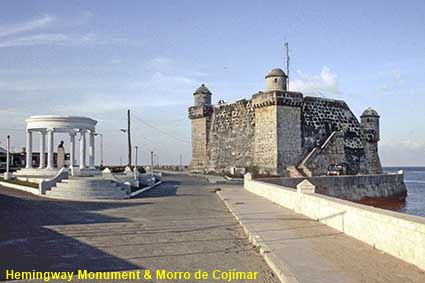
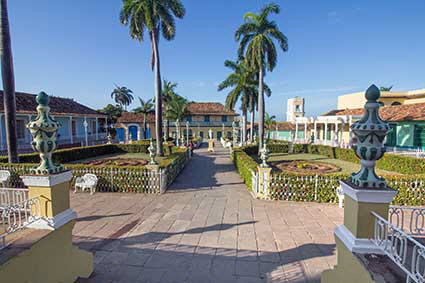
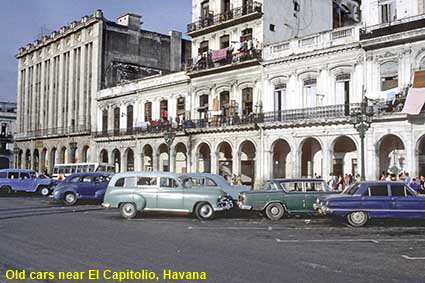
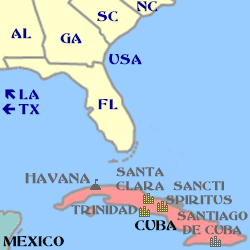
Click on Minimap to navigate
Home >
DLU1804220
At the moment we have only one page on Cuba


Hemingway Monument & Morro de Cojímar
Ernest Hemingway lived from 1939 in San Francisco de Paula, south east of Havana. In 1960 the deteriorating relationship between the USA and Cuba prevented him from returning after a trip abroad, leaving his house Finca Vigía abandoned. You can visit Finca Vigía but when we visited in 1997 unlike Hemingway’s Key West house we could not go in, we were only allowed to peer through dirty windows, too dirty to take pictures. Although still full of Hemingway’s possessions, the house appeared to be in a poor state of repair. It has since been restored, but a return to Finca Vigía was not part of our 2016 trip. Hemingway kept his boat ‘Pilar’ at nearby Cojímar and after his death local fishermen melted down brass boat fittings to make a bust of him for this monument built beside the fort, Morro de Cojímar. ‘Pilar’ is now high and dry on display at Finca Vigía.
Plaza Mayor, Trinidad de Cuba
This is probably the most authentic Spanish colonial town in the world, now preserved as a UNESCO World Heritage site. Founded in 1514 Trindad became first a slave trading centre then later on it turned to cane sugar. It has been preserved because in the first half of the 20th century it went into decline, and when the communist government came to power it lacked the resources to modernise it. The historic centre of Trinidad has been made traffic free so this picture is virtually timeless, and likewise every other view of the historic area.
Old cars near El Capitolio, Havana
An enduring symbol of US domination of Cuba is El Capitolio, the former Cuban capitol building. Built between 1909 and 1913 it is a replica of the US Capitol in Washington DC. Because it is symbolic of the period of US domination, the revolutionary government decided not to use it for government, so they turned it into a Museum of Natural Science. We didn’t see any point in showing a picture of a replica of the US Capitol, so in 1997 we instead turned the camera round to show some of the cars in regular use in Cuba. Prior to the revolution, the US motor industry supplied Cuba with its cars. With the supply cut off after the revolution, Cubans have became experts at keeping the old cars going. Back in 1997 we concluded that Cuba was a living museum of 1950s US automobiles. Come 2016 and the situation had changed little in the areas away from Havana, but in and around Havana there were more modern cars and some of the old cars had been beautifully restored. Click Tab 2 to see a restored car now serving as a taxi.
Vinales Valley from Mirador
Near the western end of Cuba is the distinctive scenery of the Vinales Valley. Here spectacular dome shaped limestone outcrops called mogotes rise up to 300 metres from the valley floor. This is a tobacco growing area where much of the cultivation is still done by traditional methods. Animals are still used when cultivating the fields rather than modern tractors. The building in the bottom right of the picture is a traditional tobacco drying shed.
Wedding party driving round Parque Serafin Sanchez, Sancti Spiritus
At the heart of historic Sancti Spiritis is a beautiful plaza called Parque Serafin Sanchez. The yellow and white building in the background is the former Hotel Perla de Cuba which is now a shopping centre. Around the world, newlyweds look for a spectacular location for their wedding photos. In Cuba, a beautifully restored vintage car in Parqu Serafin Sanchez fits the bill perfectly.

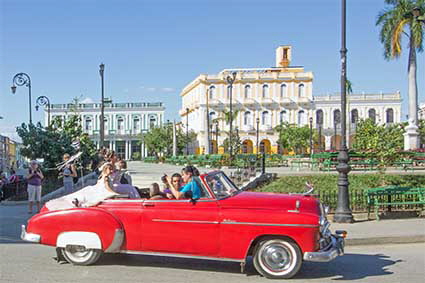

© Mike Elsden 1981 - 2023
The contents of this page may not be reproduced in full or in part without permission
